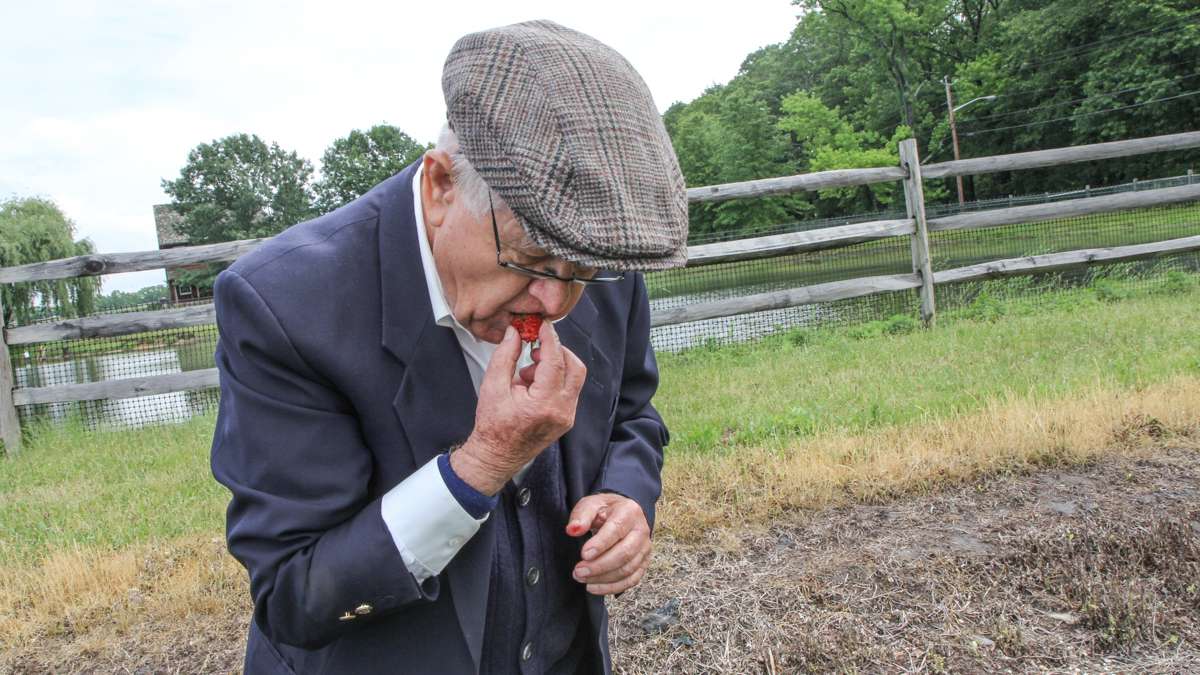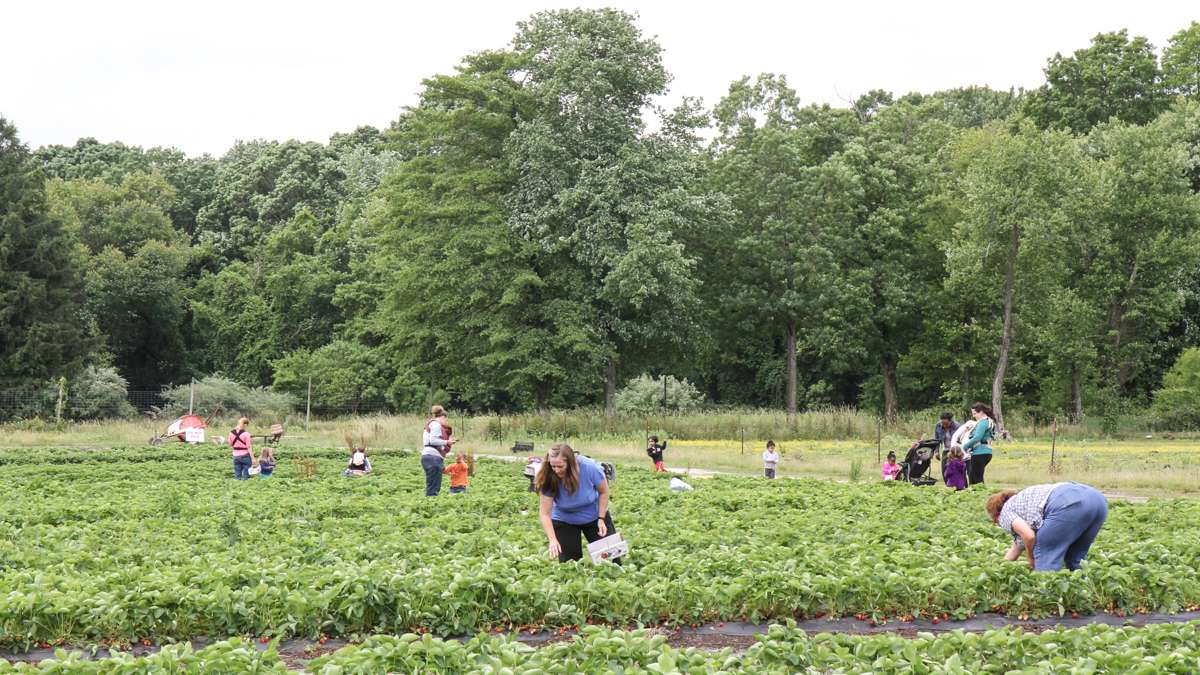Meet the world’s newest piece of fruit
ListenCreating a great tasting strawberry is as much an art as it is a science.
Thirty thousand strawberry plants. That’s how many Dr. Gojko Jelenkovic thinks he’s looked at in his search for a better strawberry.
Dr. J.—as his colleagues call him—wears a tweed cap and a trim black suit as he wanders down rows of research plants at the Rutgers New Jersey Agricultural Experiment Station, selecting and tasting berries. Some are round. Some have the shape of Christmas bulbs.
“You select parents but because of the complexity of the genetic material, you cannot predict exactly what you’ll get,” explained Jelenkovic.
Dr. Jelenkovic has trained as a geneticist and once worked in biotechnology. He once did work that involved manipulating one gene to make a plant resistant to disease, but these strawberries are all cultivated traditionally.
It’s the end of strawberry season in the northeast—a narrow window in the late spring that’s harvest time on local farms. With competition from mass producers in Florida and California who also have long growing seasons, small producers have to compete on other grounds. The only way to get the total combination of flavor and shape and color sought by local farmers is to cross the genetically complicated plants over and over again.
The first line of strawberries from Dr. Jelenkovic’s research to receive a patent is called the Rutgers Scarlet. One of the collaborators involved in the launch, Bill Hlubik says he has never worked with any crop with more complicated genetics.
A couple of years ago, with Dr. Jelenkovic nearing retirement, Hlubik was one of the people asked to help accelerate the process of bringing the strawberry strains to farmers’ fields.
On the back of his hybrid SUV he has a bumper sticker that says: “No Farmers / No Food.” He works most closely with growers and spends time down tree-lined suburban roads to visit farms like Giamarese Farm & Orchards in East Brunswick, New Jersey. A few swans swim around a small pond beside a “u-pick” field.
The owner, third-generation farmer Jim Giamarese, has given feedback on the test strains throughout the process.
“I’ve been growing strawberries 35, 40 years,” he noted. Every year is new so you get a fresh start pretty much every year. So you see what worked last year. If you think you can improve it, you know, you try to improve it.”
If you think about the taste of a good strawberry, there’s the sweet and then the acid, the tang.
Besides their complicated genetics, strawberry plants have delicate temperaments. The same plants will produce different tasting berries week to week depending on the weather. Hot, sunny weather concentrates more sugar.
One hot spring, Jelenkovic grew a variety with berries so sweet they called it the candy berry, but once the conditions changed, the flavor disappeared. “We kept the plant and we tried to cross it but it just didn’t work.”
There are perhaps thousands of varieties adapted to conditions all over the world: hot sun, cold, humidity. The newest, Rutgers Scarlet is a strikingly deep red, roughly Christmas bulb-shaped and extremely sweet. Local farmers growing the berries say they can’t meet public demand for it at their markets and farm stands.
The next stage of Hlubick and Giamarese’s collaboration will be trials to extend the fruit’s season. The strawberry harvest for a small-scale grower in the northeast usually only lasts about three weeks.
“If you get really lucky, the good lord might give you four,” Giamarese noted.
He’s also growing a couple other varieties based on Dr. Jelenkovic’s research that are in their final stages, on track to become new patented strains.
It’s worth noting that Dr. J’s retirement, which kick-started getting the berries to this point, came and went two years ago.
“Some people told me in greenhouse why don’t you go to some exotic place and just relax,” he chuckles. “I tell them I said I find my home in Piscataway, very exotic!”
Then, so is his greenhouse and while it’s close at hand, he always has somewhere to test out new ideas.
WHYY is your source for fact-based, in-depth journalism and information. As a nonprofit organization, we rely on financial support from readers like you. Please give today.











